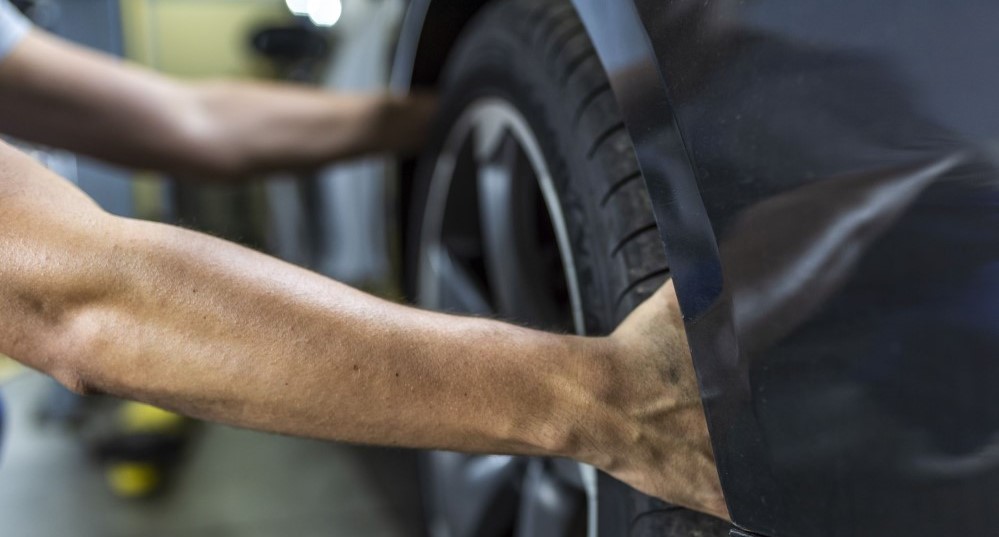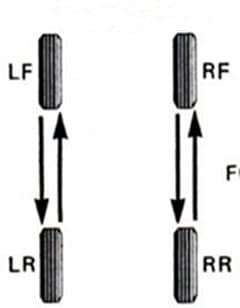
With this crummy economy, we’re all looking for ways to save money. One way to save a few bucks is doing your own auto maintenance. We’ve already discussed how to change your own oil. Today we’re going to tackle another maintenance job that you can easily do yourself.
If you’re not careful, your car’s tires can become a big money pit. Tires aren’t cheap. A new one can set you back at least ksh 7000. If you go through a new set of tires every year, you’re looking at dropping at least ksh 28,000.
One simple way you can extend the life of your tires is regularly rotating them on your car. Tire rotation means changing where the individual tire is mounted on the car. Some people don’t ever have their tires rotated, and those that do usually let a garage take care of it. In today’s post we show you how.
Why Rotate Your Tires?
Front and rear tires wear differently. For example, the front tires carry more than 60% of your car’s weight; consequently, front tires wear down faster than the rear ones. Also, turning wears the front tires at different rates.
Rotating tires equalizes these natural wear patterns by changing the positions of your tires. By rotating your tires regularly, you’ll ensure yourself a smoother and safer ride. And more importantly (for me at least) you’ll save money in the long run by extending the life of your tires.
Oh, and it feels manly to flip tires around, too.
How Often Should You Rotate Tires?
Check your car’s owner’s manual for the recommended tire rotation schedule. Most manufacturers recommend that you rotate your tires every 10,000km. An easy way to remember to rotate your tires is to do it whenever you change the oil on your car.
Tools Needed
- Car jack.
- Jack stands
Rotation Pattern: Directional or Non-directional Tires?
Before we start loosening those nuts, we need to know what pattern we’re going to use to rotate our tires. The way you rotate your tires depends on a few factors, the biggest one being whether your car has directional or non-directional tires.
How to Rotate Directional Tires
Directional tires have a “one-way” tread pattern that are optimized for the direction the tires rotate on the car, so they’re specifically made for either the left or right side. The grooves are angled to optimize handling, and they also do a good job of channeling water out from under the tire on wet surfaces, reducing hydroplaning and improving wet traction.
Little arrows or triangles on the sidewall indicate which way the tire is supposed to turn.
To rotate directional tires, just switch the front right tire for the back right tire, and the front left tire for the back left tire, like this:

How to Rotate Non-directional Tires
The tread pattern on non-directional tires is designed in such a way that the tire can be mounted on the wheel for any direction of rotation. So you can switch which side the tires are on when you rotate them.
To rotate non-directional tires, use the cross pattern. For cars with rear-wheel drive, move the front tires to the opposite sides of the rear: left-front to right-rear and right-front to left-rear. The rear tires are moved straight forward. Here’s how it looks visually:

On vehicles with front-wheel drive, just do the opposite. Move the rear tires to the opposite sides of the front and move the front tires straight back.
Rotate the Spare In?
Some old car maintenance guides recommend that drivers rotate their spare tire into use in order to give one of the tires a much needed break. The problem with this advice is that the vast majority of modern spare tires aren’t designed for extended driving. They’re often smaller and feature a lighter-weight construction and shallower tread depth. They’re designed to simply get you to a shop to fix the original tire. That’s it.
Some cars still come equipped with full-size matching spare tires. Off road vehicles and many SUVs usually have them. If you have a car that has a matching spare tire, it isn’t a bad idea to rotate it into use. Here’s a diagram for the suggested rotation:

Credits: AOM
